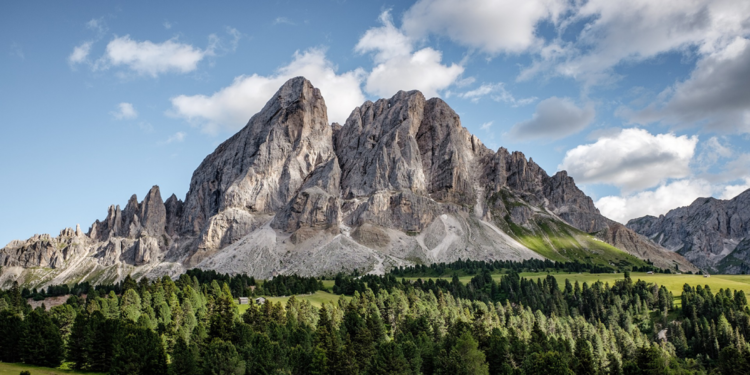


06/15/2001
"Picture our behavior toward Mexican migrants," the heading of the op-ed essay in Wyoming’s statewide paper, the Casper Star-Tribune, read. The article by Katherine Collins, a local journalist and documentary filmmaker, celebrated a mobile exhibit of 51 retablos comprising part of a symposium at Western Wyoming College in Rock Springs last March, entitled "Modern Immigrants: Mexicans in the Rocky Mountain West."
Retablosare behind-the-altar works of Mexican folk art, giving thanks in pictures for the intercession of one saint or another in some life-threatening or simply dangerous situation. This particular collection, the property of Professors Jorge Durand of the University of Guadalajara and Douglas Massey of the University of Pennsylvania, depicts the experiences of Mexican immigrants in the United States over the past century. Its earliest retablo has to do with a Mexican railroad worker injured on the job in Kansas in 1908 who later recovered, the latest with "the miracle of leaving prison in the U.S.A. with my uncle and cousin" as experienced by a native of Guanajuato in 1988. In between, retablos "give infinite thanks…that when the Migra swooped into Jackson [Hole] on Aug. 21, 1996, and arrested 150 of my countrymen, throwing many of them into horse trailers, I was able to climb through a window in the laundry room where I was working and hide [sic] in the bushes until dark;" "….that finding myself working in a motel where I was treated badly I was able to change jobs and that my new employer provides housing and gives me extra money for the cost of driving across the [Teton] Pass, and lets my wife and me work different shifts so one of us can be home with the children;" and so forth.
If you manage to see this exhibit," Collins writes, "you'll give infinite thanks to the Wyoming Council for the Humanities, Sweetwater BOCES [Board of Cooperative Services] and others who made this visual and intellectual experience possible."
Maybe some laundry worker in Jackson will present them with a retablo the size of one of those WPA murals from the Depression Era? Her main rhetorical point, though, is embodied in a question: "Are the stories of Mexican migrant and immigrant workers in Jackson already enshrined in Mexico? How will Wyoming and its people be portrayed in the Mexican retablos of today and tomorrow, as our resort economy becomes increasingly dependent on Mexican workers?" (Frankly, my dear, I don’t give a damn.)
During the 1990s the Hispanic population of the Cowboy State, whose 493,782 residents make it the least inhabited state in the nation, soared 23 percent, from 25,751 to 31,669. The greatest increase — 158 in 1990 to 1185 in 2000 — occurred in Teton County where Mexicans, Wyoming’s largest minority group, have been flocking for the past ten years to take jobs in the hotel and restaurant industries. This, despite the fact that Wyoming has less of a multicultural presence than any of the fifty other states. (A professor I know at U Dub in Laramie thinks nothing of driving 240 miles round-trip to enjoy what she calls the "multi-racial" experience of Denver.) According to "Hispanic advocates," most of these immigrants come to Wyoming directly from the state of Tlaxcala. "The way it all started," one of them has explained, "was that one ranch brought a family from that region and that started the whole flow." "It’s amazing when you go to [to Tlaxcala]," she went on, "you see people walking around in Jackson Hole T-shirts with Jackson Hole key chains and posters of snowboards on the wall. You see a lot of representations of this that are very funny and very obvious." Ha-ha. (Could "obvious" mean "stereotyped"?) It was the late Julian Simon, remember, who warned that if people ever quit wanting to come to America, Americans' feelings would be terribly hurt. [Click here for Peter Brimelow’s Forbes obituary of Simon. Mexican migration to Wyoming has been accompanied by the usual…problems. The dropout rate for Hispanic students exceeds forty percent, while the predominance of women over seasonal male workers returning to Mexico each fall means that the immigrants require more and better job openings, more entitlements, more "acknowledgement from society" of their culture and their needs," as a Star-Tribune reporter put it. (Also they have more children, each of whom becomes an instant American citizen at birth thanks to the current intepretation of the 14th Amendment.)
Where some see problems, though, our Pollyanna enthusiasts see only opportunities: the chance to inform ourselves about Mexican culture, get over our misunderstandings and misconceptions, retrain our historical perspective — and have our retablos done in Tlaxcala and Oaxaca. (Every Wyomingite can be famous for fifteen minutes in Mexico.) It all amounts, of course, to Wyoming’s homegrown elite softening up the rest of us for invasion and takeover, both cultural and political — all of it inevitable, according to the New Historical Dialectic — whereby European culture is doomed to be wiped from the face of the earth.
We need to educate these people, a high Wyoming state official remarked during last fall’s election season; they're our future, after all!
To paraphrase the familiar saying: Be careful what you plan for. You just might get it.
Chilton Williamson Jr. is the author of The Immigration Mystique: America’s False Conscience and an editor and columnist for Chronicles Magazine, where he writes the The Hundredth Meridian column about life in the Rocky Mountain West.
June 15, 2001